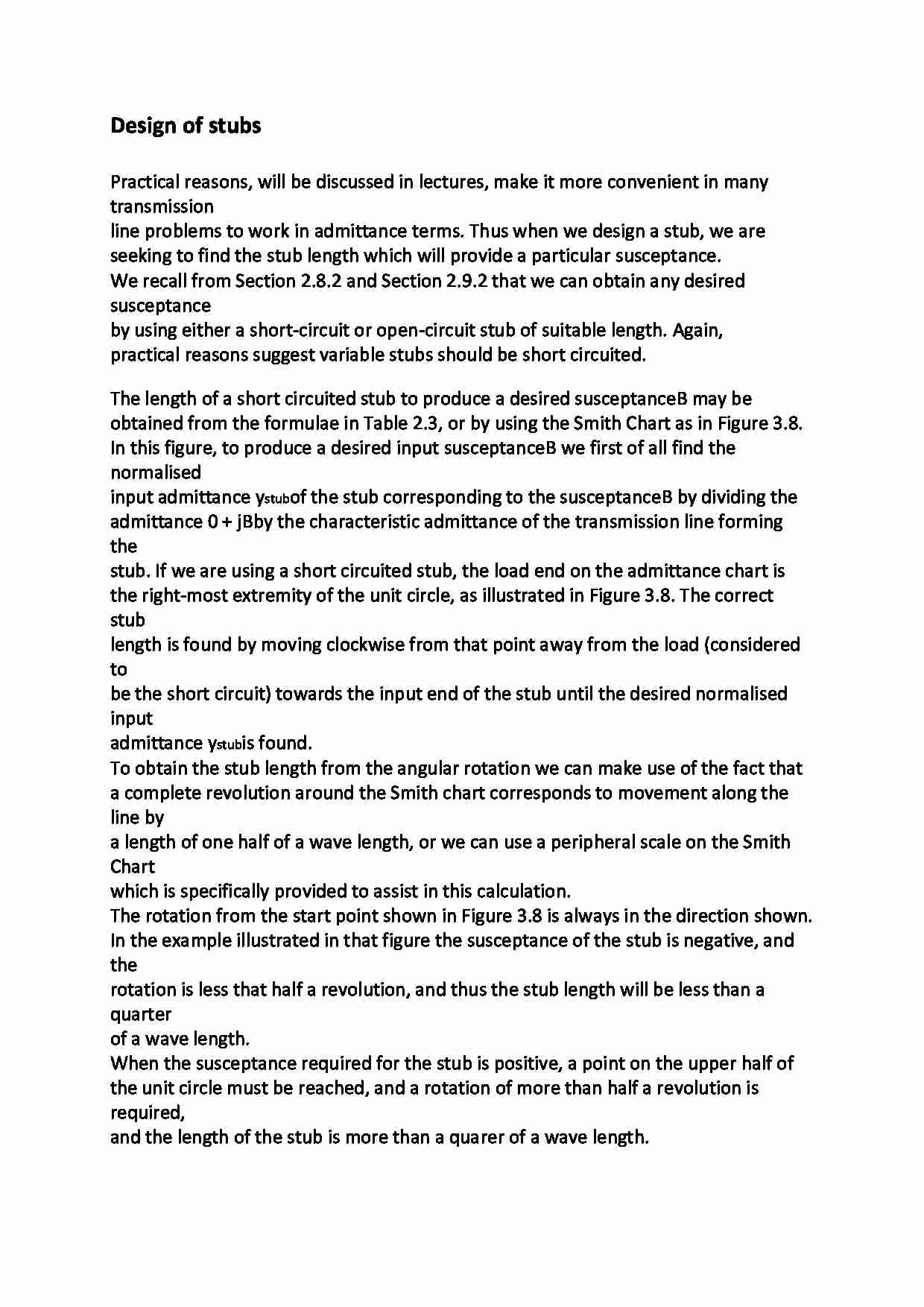To tylko jedna z 2 stron tej notatki. Zaloguj się aby zobaczyć ten dokument.
Zobacz
całą notatkę


Design of stubs Practical reasons, will be discussed in lectures, make it more convenient in many transmission
line problems to work in admittance terms. Thus when we design a stub, we are
seeking to find the stub length which will provide a particular susceptance.
We recall from Section 2.8.2 and Section 2.9.2 that we can obtain any desired susceptance
by using either a short-circuit or open-circuit stub of suitable length. Again,
practical reasons suggest variable stubs should be short circuited.
The length of a short circuited stub to produce a desired susceptance B may be
obtained from the formulae in Table 2.3, or by using the Smith Chart as in Figure 3.8.
In this figure, to produce a desired input susceptance B we first of all find the normalised
input admittance ystub of the stub corresponding to the susceptance B by dividing the
admittance 0 + jB by the characteristic admittance of the transmission line forming the
stub. If we are using a short circuited stub, the load end on the admittance chart is
the right-most extremity of the unit circle, as illustrated in Figure 3.8. The correct stub
length is found by moving clockwise from that point away from the load (considered to
be the short circuit) towards the input end of the stub until the desired normalised input
admittance ystub is found.
To obtain the stub length from the angular rotation we can make use of the fact that
a complete revolution around the Smith chart corresponds to movement along the line by
a length of one half of a wave length, or we can use a peripheral scale on the Smith Chart
which is specifically provided to assist in this calculation.
The rotation from the start point shown in Figure 3.8 is always in the direction shown.
In the example illustrated in that figure the susceptance of the stub is negative, and the
rotation is less that half a revolution, and thus the stub length will be less than a quarter
of a wave length.
When the susceptance required for the stub is positive, a point on the upper half of
the unit circle must be reached, and a rotation of more than half a revolution is required,
and the length of the stub is more than a quarer of a wave length.
... zobacz całą notatkę




Komentarze użytkowników (0)